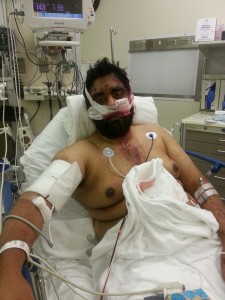I just finished viewing one of the most powerful five-minute video clips I have ever watched. The video features Tom Satterly who retired from the United States Army as a Master Sergeant after many years of service as a Delta Force Special Operator. Master Sergeant Satterly was awarded six Bronze Stars for his service in combat in four countries. His first exposure to combat was an 18-hour firefight in Mogadishu and was depicted in the movie Black Hawk Down. At the time, this was the longest sustained continuous gun battle for American soldiers since the Vietnam War. If you have read Staying Alive – How To Survive Deadly Encounters, you likely recall that Satterly was directly involved with the captures of both Manuel Noriega and Saddam Hussein. In his new video, Master Sergeant Satterly delivers a powerful and much-needed message about how important it is for people not to fail to try when confronted with opportunity, challenges and even the seemingly overwhelming odds of survival.
Master Sergeant Satterly’s new video is even more powerful and valuable. I urge you to take five minutes to hear a powerful and important message by watching this video I can assure you that you will find the segment to be worth your time.
Tom also contributed to a series of free training videos on our website:
Staying Alive – Combat and Lessons for Every Day Crisis Stress from Safe Havens International on Vimeo.
All of the videos can be accessed at our “Staying Alive” resources page:
http://safehavensinternational.org/resources/staying-alive/
Feedback from visitors to our website has been that these compelling videos have been helpful to many educators and public safety officials from around the world. Master Sergeant Satterly is scheduled to testify before the United States Congress on the topics of Post Traumatic Stress Disorder and how our military can better serve those like him who have allowed the rest of us to enjoy the freedom and safety that is truly unique in contrast with other democracies let alone the majority of nations.
I am thankful to Tom Satterly and the thousands of other brave men and women who serve as soldiers, police officers, firefighters, security personnel, mental health professionals, educators and other selfless professionals who sacrifice in different ways to make our world a better place. Master Sergeant Satterly’s powerful message reminds us that we can achieve much as long as we do not fail to try.

